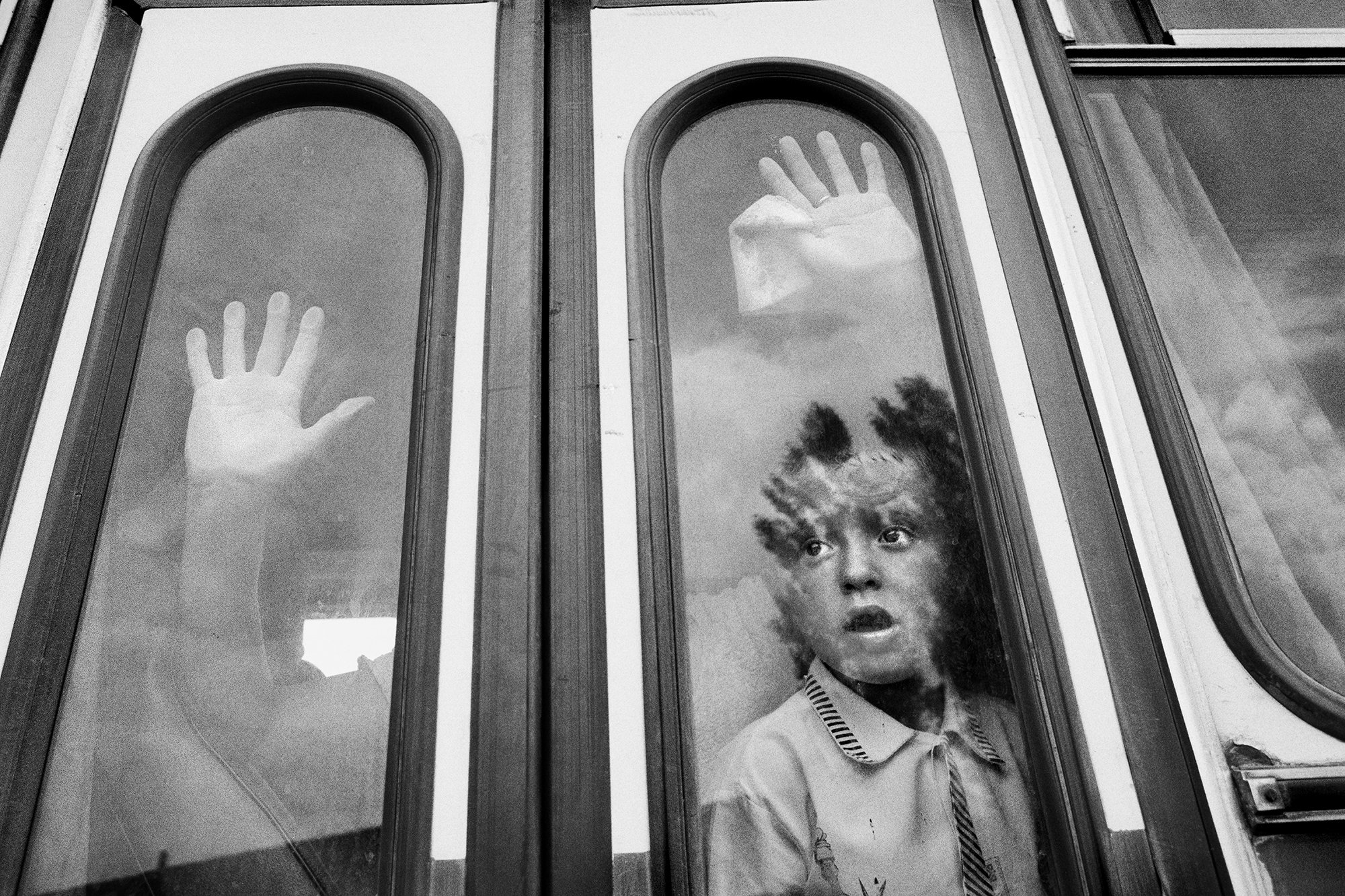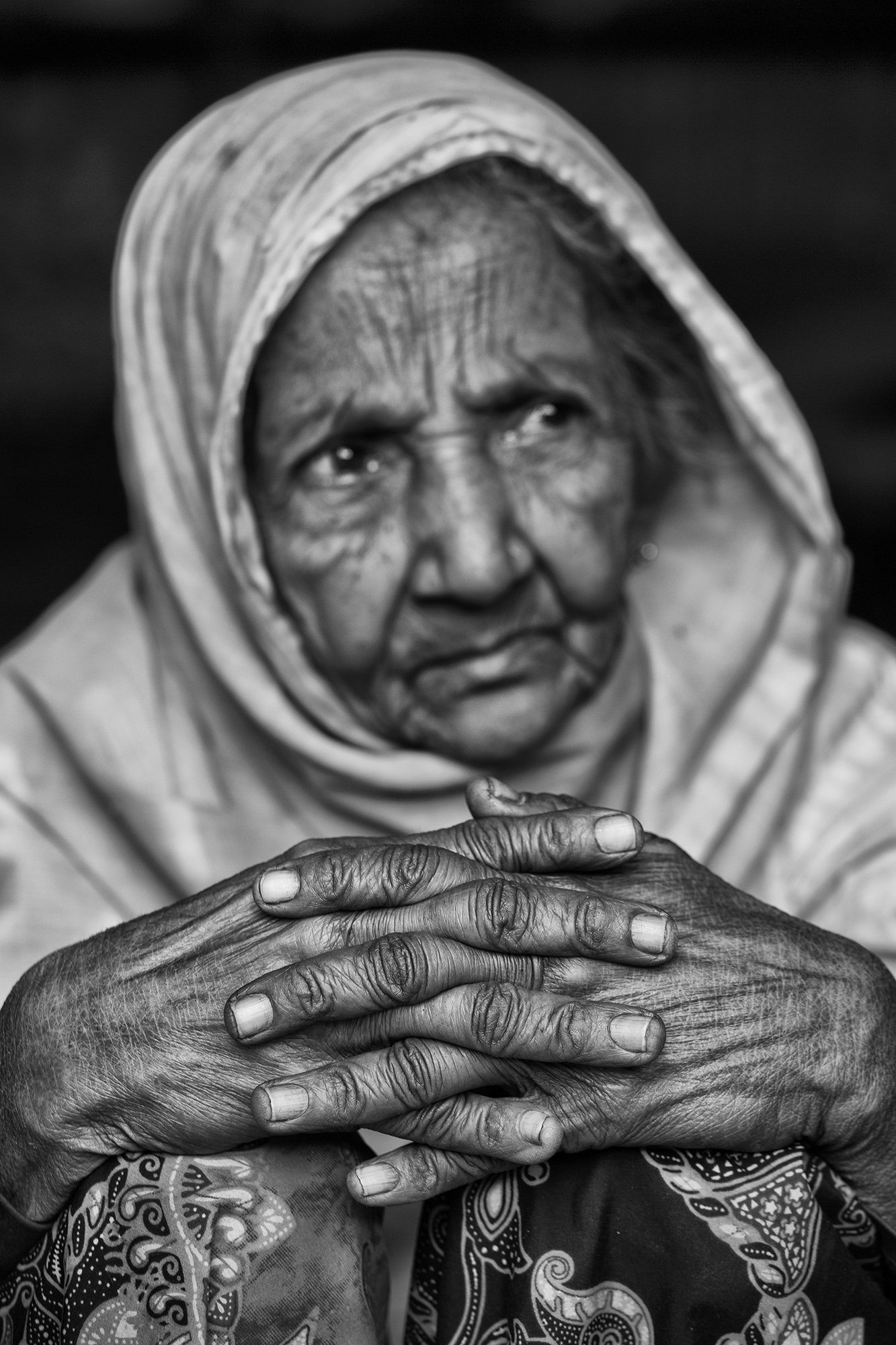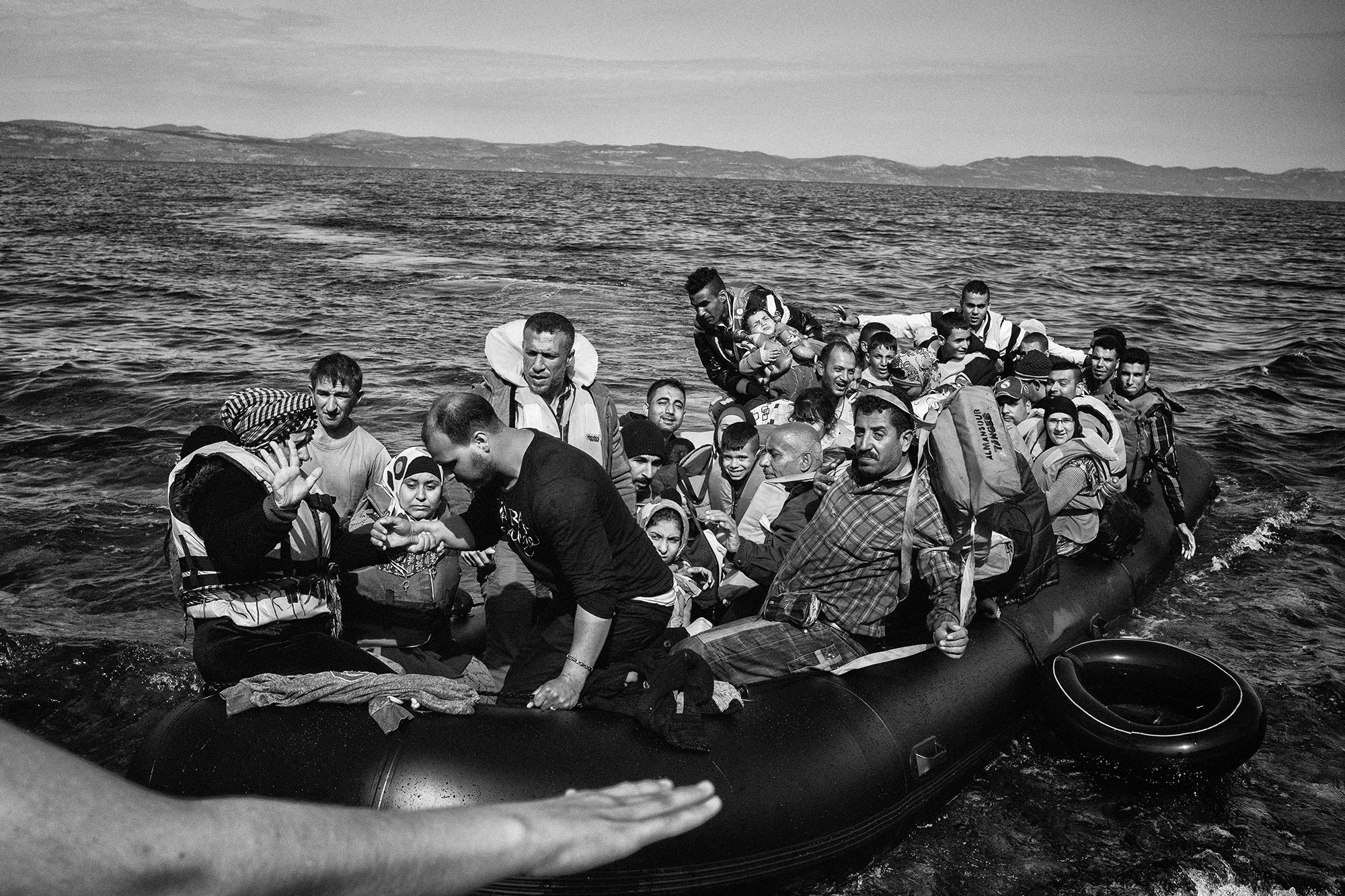
Exodus written by Daniel McGrory for iWITNESS, 2004.
The trail of misery stretched for over a hundred kilometres, as an exodus of Rwandan refugees fled across their border to the town of Goma in neighbouring Zaire. The one million refugees driven from their homes by death squads could not have picked a more inhospitable place to seek sanctuary. Unwanted by their neighbours, they were denied food and shelter, and forced to camp on jagged volcanic rock which offered no trees for firewood, no water, and no comfort for the many too weak to walk another step. As international aid agencies struggled to cope, over 50,000 died from disease in the first fortnight in Goma, in what the refugees believed would be their refuge from genocide. The murder of Rwanda's Hutu President on April 6th had signalled the start of the slaughter in this small mountainous central African state. Radio stations began pumping out violent appeals for Hutus to grab what weapons they had to hand, and to kill their Tutsi neighbours or be killed. The United Nations estimate that in 100 days, beginning in April 1994, as many as 800,000 men, women and children of the majority Tutsi tribe were shot, strangled, bludgeoned, burned, or hacked to death, by their Hutu rivals. When the Tutsi Patriotic Front unexpectedly defeated the Hutu government forces, the Hutu population fled to escape certain death from Tutsis thirsting for revenge. They left behind them countryside of corpses.
Frightened refugees poured out of this landlocked country in every direction. In 48 hours a quarter of a million went east to Tanzania. About the same number staggered south to Burundi, but most headed west to Zaire and to Goma, an impoverished town of 200,000 on the banks of Lake Kivu. Observers from the United Nations refugee agency - UNHCR - counted 600 people crossing the border at Goma every minute. One official declared "There has never been a movement of refugees like this in history". In the overcrowded makeshift refugee camps that appeared around Goma, there were no tents or shelter of any kind, and no clean water or sanitation. Disease swiftly became the new killer. When cholera struck, three thousand people died in the first few days. Within a fortnight over 50,000 perished. The first emergency medical teams to reach Goma could do no more than treat the sick where they fell. Parents with barely the strength to stand, held intravenous drips feeding saline into the skeletal arms of children who would not survive the day. There was neither dignity or privacy for the dying. Nor was there any place for their loved ones to bury them. The razor sharp black volcanic rock made it impossible to dig graves, so all families could do were wrap their dead in straw mats that was their only bedding, and leave the bodies by the side of the road. At first light volunteers would come in trucks to scoop up the dead, and take them to a mass grave the size of a football pitch.
As soon as that was full, bulldozers had to cut down Goma's one fertile corner, the town's banana plantation, to excavate a pit for the thousands more corpses. Only an international airlift of food, on the scale last seen in the 1948 operation to save Berlin, kept Goma from starving. In the emergency camps there was no respite from the savagery. Refugees were used as human shields by the Hutu militiamen who had orchestrated the mass murder, and now feared being discovered by their Tutsi rivals, or war crimes investigators. The gunmen grabbed control of relief supplies, and only fed those who obeyed them. The bodies of those that didn't were found floating in Lake Kivu. Ten years on, more than 3.5 million Rwandans have gone home. Slowly, with international help, they are rebuilding their lives, though they do so in the knowledge the killers of their families still live in their midst, as Rwanda doesn't have enough jails to punish the thousands who took part in the slaughter.
Danny, who worked around the world for the Daily Express and the Times and a close friend of Tom’s.
Tears of anguish for mother Gordana Burazor and her confused baby son Andre as they prepare to leave Sarajevo on a bus promised safe passage by the besieging Serb forces. Gordana and Andre never returned to Sarajevo and now live in Perth, western Australia. 1992.
Refugees are taken to a camp by bus after arriving at Macedonia from Kosovo during the spring of 1999 when Serb forces forced 1.5 million Albanians from their homes.
Transported out of Kosovo into Macedonia by bus in the middle of the night, a father and son escape from their Serb tormentors, during the spring of 1999 when 1.5 million Kosovo Albanias were forced out of their homes.
After arriving at a refugee camp in Kukes, Albania, a mother is reunited with her children after being separated from them on the journey after being ‘ethnically cleansed’ out of Kosovo by Serb forces.
An old woman rests after crossing the border between Kosovo and Albania after being forced to flee her home by Serb forces during the spring of 1999.
Paralysed and helpless, a woman ethnically cleansed from her home in Kosovo into Albania shelters from driving rain under plastic sheeting.
Kosavar Albania women overcome with grief bury their men folk killed by Serb forces in 1999.
An elderly Rohingya lady sits outside her house in the vast Kutupalong refugee camp at Cox’s Bazar, Bangladesh.
One of the few Muslim men to escape from Srebrenica plays with his children at Tuzla airport refugee camp.
Days after British troops freed Basra from Saddam Hussein's forces Iraqi women carry firewood through thick smoke from a burning oil field near the city.
Victims of the cholera outbreak which struck refugees in Goma, Zaire, during the 1994 crisis when one million people fled from Rwanda into neighbouring countries.
A father cradles his sick baby during the 1994 cholera outbreak which claimed thousands of lives in Goma, Zaire, after one million people fled fighting in Rwanda.
A column of refugees in Goma, Zaire, during the 1994 crisis when one million people fled from genocide in Rwanda into neighbouring countries.
Women refugees carrying all their remaining possessions arrive at Kibumba camp, Goma, after crossing the border out of Rwanda to escape the genocide of 1994.
The International Red Cross delivers food to crowds in excess of 250,000 at the Kibumba refugee camp near Goma during the 1994 crisis.
Victims of the cholera outbreak which struck refugees in Goma, Zaire, during the 1994 crisis when one million people fled from neighbouring Rwanda.
A girl is hauled up on top of the Berlin Wall near Check Point Charlie on the morning of November 10th, 1989. Hours later the first section of the Berlin Wall was torn down and thousands of people flooded out of East Germany.
Hundreds of bodies are buried in a mass grave as a small boy looks on as the outbreak of chlorea devastates the community of over one million people who fled from Rwanda in 1994.
The first section of the Berlin Wall is torn down by crowds on the morning of November 10th 1989.
A rubber boat packed with refugees and migrants lands on the shoreline of Lesbos after successfully crossing the Aegean Sea from Turkey, 2015.
A father celbrates with his child on the Greek Island of Lesbos after a stormy crossing with his family over the Aegean Sea from Turkey. In 2015 over 700,000 refugees and migrants fleeing from war and poverty landed in Greece during their journey to secure a better life in Western Europe.
Women volunteers check for vital signs of life after pulling a small child onto the shoreline of the Greek Island of Lesbos. Thousands of desparate refugees have crossed the Aegean Sea from Turkey to Greece in small rubber boats fleeing from warand poverty during their journey to secure a better life in Western Europe.
Refugees line up to board the Ariadne ferry at the port of Mytilene in Lesbos, Greece. The people had crossed the Aegean Sea from Turkey by rubber dinghy and were on the next stage of their journey north attempting to find a better life in Europe.
4 years old Zainab Abdullwab on the shoreline of the Greek Island of Lesbos after crossing the Aegean Sea from Turkey in a rubber dinghy with her parents and 60 other people fleeing from war and poverty in Afghanistan.
After arriving by train at Sredisce Ob Dravi, Slovenia, a mother and baby wait for buses provided by the Slovenian authorities to take them further along their journey towards Western Europe where they hope to find a better life free from conflict and poverty.























